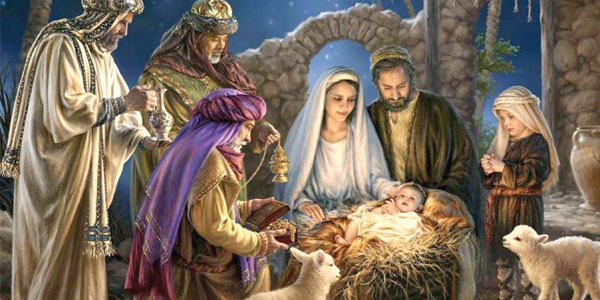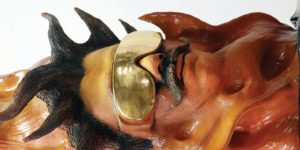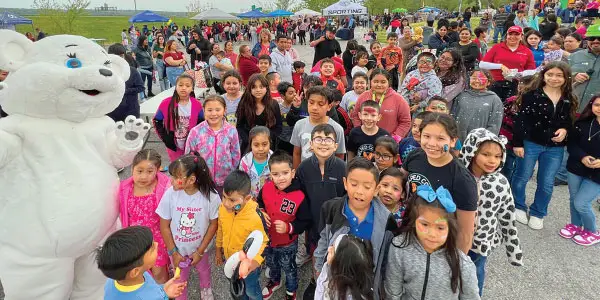
By Yanis De Palma
Christmas is often thought of as a Christian holiday – a celebration of Jesus Christ’s birth.
But as history shows, other faith traditions and some secular traditions have contributed to the Dec. 25 holiday, in terms of when and how it’s observed. And as history shows, the way Christians have observed it has changed over the centuries.
Before Christ’s birth, some early Europeans celebrated the wonder of birth during the darkest days of winter. Beginning the week leading up to the winter solstice and continuing for a full month, with Dec. 25 as the most sacred day, the ancient Romans celebrated the birthday of Mithra, an infant god believed to have been born of a rock.
Ironically, during the early days of Christianity, Christ’s birth wasn’t celebrated. It wasn’t until the fourth century that church officials determined that Christ’s birth should be considered a holiday.
Originally, the celebration was called the Feast of the Nativity. Although the Bible doesn’t mention the day of Christ’s birth, Pope Julius I chose Dec. 25. It’s believed the church chose the date to adopt and absorb the traditions of the Saturnalia festival, observed Dec. 17-23 annually in ancient Rome.
Over time, as Christianity spread throughout Europe, Christmas began to be observed by believers attending religious services, then celebrated in a drunken, carnivalesque atmosphere. It also began to be observed in some countries by the upper classes providing for less fortunate citizens.
Just as the observance of Christmas evolved in Europe, so did its observance evolve in the United States. In early America, Christmas wasn’t observed as a holiday, in keeping with the beliefs of the English Pilgrims who settled in America during the 17th century. Moreover, Christmas wasn’t declared a federal holiday until 1870.
During the early 19th century, as America experienced a period of class conflict and turmoil, Christmas traditions began to be re-invented, with the carnivalesque trapping replaced by a family-centered holiday. Many historians claim the “The Sketchbook of Geoffrey Crayon,” written by Washington Irving, “invented” American Christmas traditions through its series of stories about the celebration of Christmas.
Over time, Americans began building their own Christmas traditions, such as sending holiday cards, gift-giving, family meals and decorating their homes. Thus, Americans have re-invented a centuries-old holiday to fill the needs of a diverse, still-growing nation.
_______________________________________________________________________________________________
La Navidad a menudo se considera como una fiesta cristiana, una celebración del nacimiento de Jesucristo.
Pero como muestra la historia, otras tradiciones de fe y algunas tradiciones seculares han contribuido a la celebración del 25 de diciembre, en términos de cuándo y cómo se observa. Como muestra la historia, la forma en que los cristianos lo han celebrado ha cambiado a lo largo de los siglos.
Antes del nacimiento de Cristo, algunos de los primeros europeos celebraron la maravilla del nacimiento durante los días más oscuros del invierno. Comenzando la semana anterior al solsticio de invierno y continuando por un mes completo. Con el 25 de diciembre como el día más sagrado, los antiguos romanos celebraron el cumpleaños de Mitra, un dios infantil que se cree nació de una roca.
Irónicamente, durante los primeros días del cristianismo, el nacimiento de Cristo no se celebró. No fue sino hasta el siglo IV que los funcionarios de la iglesia determinaron que el nacimiento de Cristo debía considerarse un día festivo.
Originalmente, la celebración se llamaba la Fiesta de la Natividad. Aunque la Biblia no menciona el día del nacimiento de Cristo, el Papa Julio I eligió el 25 de diciembre. Se cree que la iglesia eligió la fecha para adoptar y absorber las tradiciones del festival Saturnalia, que se celebra anualmente entre el 17 y el 23 de diciembre en la antigua Roma.
Con el tiempo, a medida que el cristianismo se extendió por toda Europa, la Navidad comenzó a ser celebrada por los creyentes que asistían a los servicios religiosos y luego se festejaba en un ambiente borracho y carnavalesco. También comenzó a observarse en algunos países por las clases altas que ayudaban a los ciudadanos menos afortunados.
Así como la celebración de la Navidad evolucionó en Europa, también evolucionó en Estados Unidos. En los comienzos de América, la Navidad no se observaba como un día festivo, de acuerdo con las creencias de los peregrinos ingleses que se establecieron en América durante el siglo XVII. Además, la Navidad no fue declarada feriado federal hasta 1870.
Durante los primeros años del siglo XIX, cuando Estados Unidos experimentó un período de conflicto de clases y agitación, las tradiciones navideñas comenzaron a reinventarse, y la costumbre carnavalesca fue reemplazada por unas vacaciones centradas en la familia. Muchos historiadores afirman que “The Sketchbook of Geoffrey Crayon”, escrito por Washington Irving, “inventó” las tradiciones navideñas estadounidenses a través de su serie de historias sobre la celebración de la Navidad.
Con el tiempo, los estadounidenses comenzaron a construir sus propias tradiciones navideñas, como enviar tarjetas navideñas, regalos, comidas familiares y decorar sus hogares. Por lo tanto, los estadounidenses han reinventado una fiesta de siglos de antigüedad para satisfacer las necesidades de una nación diversa y en crecimiento.









